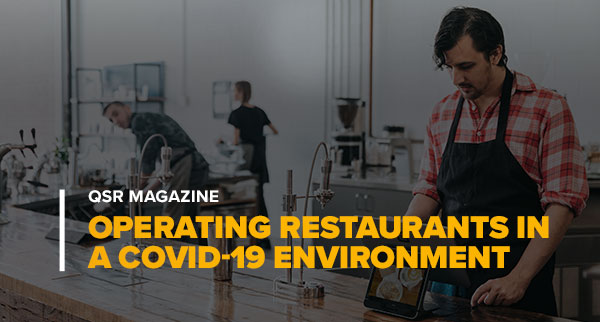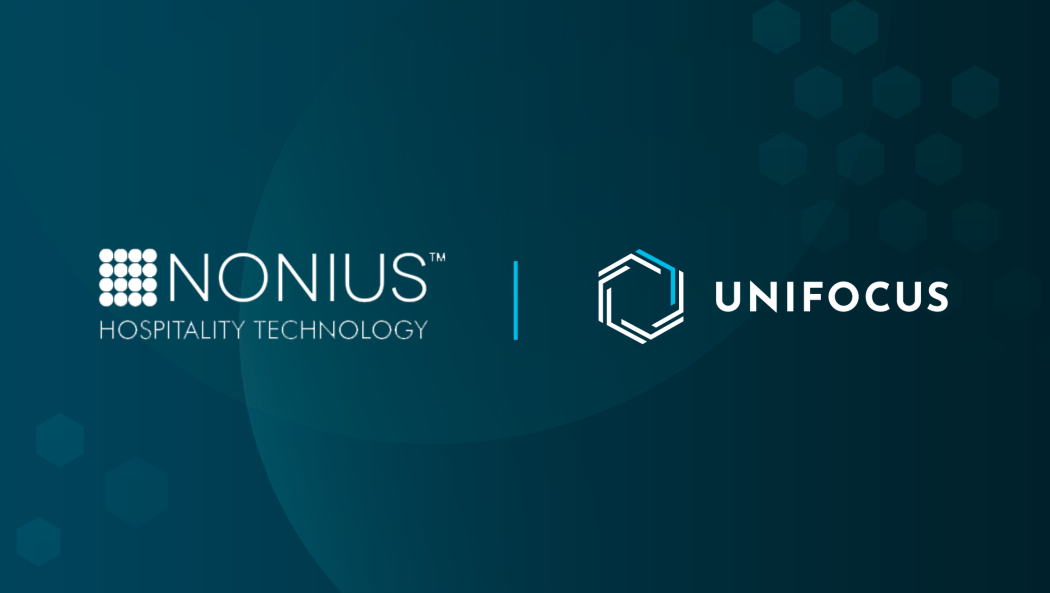May 18, 2020 - Published in QSR Magazine. As we’ve learned from COVID-19, restaurants are among the most vulnerable of businesses when a global pandemic brings the economy to a screeching halt. A Pew Research Center study found that nearly 1 in 4 U.S. workers are employed in industries most likely to feel an immediate impact from the pandemic. Unfortunately, the restaurant industry and its 13.4 million employees directly fall into that category. But on the bright side, states are beginning to relax lockdown orders as the country gears up for a phase-by-phase return to normalcy. That means a recovery period exists on the horizon. However, that road to recovery will be anything but straight and narrow. The new normal of restaurant culture will be entirely different than the one that was left behind a few months ago, as a focus on social distancing and sanitation is now equally important to perfecting any dish that comes from the kitchen.
In order to establish a firm foundation for recovery, restaurants must adapt to the societal effects of COVID-19. After all, the virus has completely transformed life as we know it. From shopping and eating out to live entertainment and travel, any semblance of interacting in public settings now has a newfound sense of anxiety alongside of it. On a psychological level, the fear of falling ill will linger in the minds of guests whenever they step foot inside a restaurant, creating a need for proper measures in place that, at least reduce, if not alleviate those concerns. It will be essential to ensure guests feel safe and are comfortable in their seats and confident in their service. Then there’s the financial side of the coin, which will require new innovative business practices that allow restaurants to operate profitably at diminished seating capacity as business slowly returns.
The following four concepts will be vital for restaurants to navigate the recovery process.
Enhanced Table Turnaround
During the early stages of reopening, restaurants will only be permitted to serve a select percentage of their total seating capacity. In turn, they will need to find ways to increase previous revenue per-seat averages from before the pandemic. Bolstering table turnaround speed will be a critical component to making up for lost revenues and therefore profits.
One solution lies in ramping up kitchen production speed, which has a direct impact on a customer’s time at the table. But how? Well, start with adjusting your menu to feature more simplified items that make it easier on your kitchen to produce dishes. From another angle, increasing peak staffing may also help speed up line production. Floor layout should also be considered, as well as implementing off-peak prep based on menu abstract data. Overall, an enhanced kitchen production speed will lead to more table turnarounds—thus more profits.
The second aspect of increasing table turns will be front of house staffing. First off, station size will be key—smaller stations always yield faster service. Management should also assess the amount of time it takes to clear and set a table once a guest has paid the bill. Can that be optimized for a quicker rate? With reduced seating capacity, a station may have more tables with fewer guests. A key factor will be the number of guests served at a point in time. Lunches, for example, have historically operated at 14 to 16 covers during certain periods. However, in the new environment, 10 to 12 will be closer to the norm to increase service speed. In some operations, cashiers will benefit considering guests will spend less time at their tables waiting to settle the bill.
Meal durations that were previously 45 minutes for lunch will need to be trimmed to the 35 to 38 minute-range. In a similar realm, dinner duration that was 1.5 hours will now need to be closer to 1 hour to 1.25 hours. Please note, that the at table time adjustments are only critical during peak hours when seating capacity is at a premium. This may not work in all operational settings, but regardless, any changes in duration will help all restaurants quickly rise up the profitability curve.
Proactive Cost Management
Another aspect of returning to profitability will be enhanced cost management. Cost controls are nothing new to the industry, however preventative measures will now prove to be even more critical. New practices like portion control and improved production management based on menu mix, as well as optimized task management should be highlighted—and even trained as needed. Staffing guidelines will need to be reworked and adhered to with real-time reporting to identify successes and challenges. Unproductive operating costs, like running an empty dishwasher or waiting for dishes from the dining room, will need to be eliminated. Meanwhile, certain costs will need to be negotiated as others—such as electric costs—are minimized. As I said, these practices are needs and should be viewed as such. Because in light of COVID-19, they are now necessities for survival, not just suggestions for success.
As part of this process, menu abstracts should also be evaluated. And that doesn’t just mean for best selling items, either. The contribution margin of each item should also be heavily weighed into account. In some cases, can a less expensive product produce the same quality outcome? Lastly, watch for waste coming back from the tables. It’s possible to discover that portion sizes may be larger than most customers care to consume. Taking steps to reduce these types of waste will increase your profit margins.
Visible Cleanliness and Health
Before guests return, restaurants should instill a staff-wide culture of hyper-cleanliness that extends beyond their normal sanitation guidelines and cleaning routines. Consider it a new normal that will require cleanliness through practices that are noticeable to everyone inside the building—employees and guests alike.
Employees can make conscientious efforts to provide patrons with an extra sense of assuredness that the dining environment is both safe and sanitary. For example, a “cleaning team” of designated employees would wipe down the table in a manner that is directly seen by the patrons. Some other options include servers wearing facemasks, the use of paper products and menus, around-the-clock restroom attendants, and sanitizer handouts for every guest.
Then comes the health aspect of the equation. Are restaurants going to take guest temperatures at the door? Can they install automatic doors, so guests won’t need to touch handles? Can they provide automatic paper towel dispensers and non-touch hand-dryers in the bathrooms? These are tough questions restaurants will face, especially since smaller establishments may not have the immediate financial resources for those additions.
Maintained Takeout/Delivery Services
Before COVID-19, 63 percent of young adults already used third-party delivery apps. That number has only increased during the pandemic. Enhanced takeout and delivery services were created to help restaurants weather the storm of the pandemic, and just because in-person dining returns does not mean they should cut them. When lockdown orders are lifted, restaurants aren’t going to suddenly reach high levels of occupancy again. It will be a gradual process, which is where takeout and delivery can help earn extra sales.
Just think of it as an option for customers who aren’t quite ready to venture out in public yet. They can still order food from favorite restaurants with minimized public, human-to-human interaction.
The delivery menu will need to be tailored with travel-friendly items that can remain fresh for long periods of travel time, as well as creative options like a “meal box” that allows customers to prepare their favorite dish at home. Based on staff resources, restaurants can potentially expand their delivery area to reach more customers. Also, there’s no sense in ending partnerships with online ordering services and third-party delivery apps (UberEats, DoorDash, Postmates, etc) that can provide additional take-out opportunities.
A profit goal without a plan is just a wish. So, from developing heightened sanitation techniques with enhanced visibility to implementing new operational strategies, restaurants will need to have proactive plans in place to return to profitability as quickly as possible. In reality, helping your operation adapt step-by-step to a new and advancing normal is what will allow us to not only emerge from this challenging period, but also create a sustainable business operation for the future.






